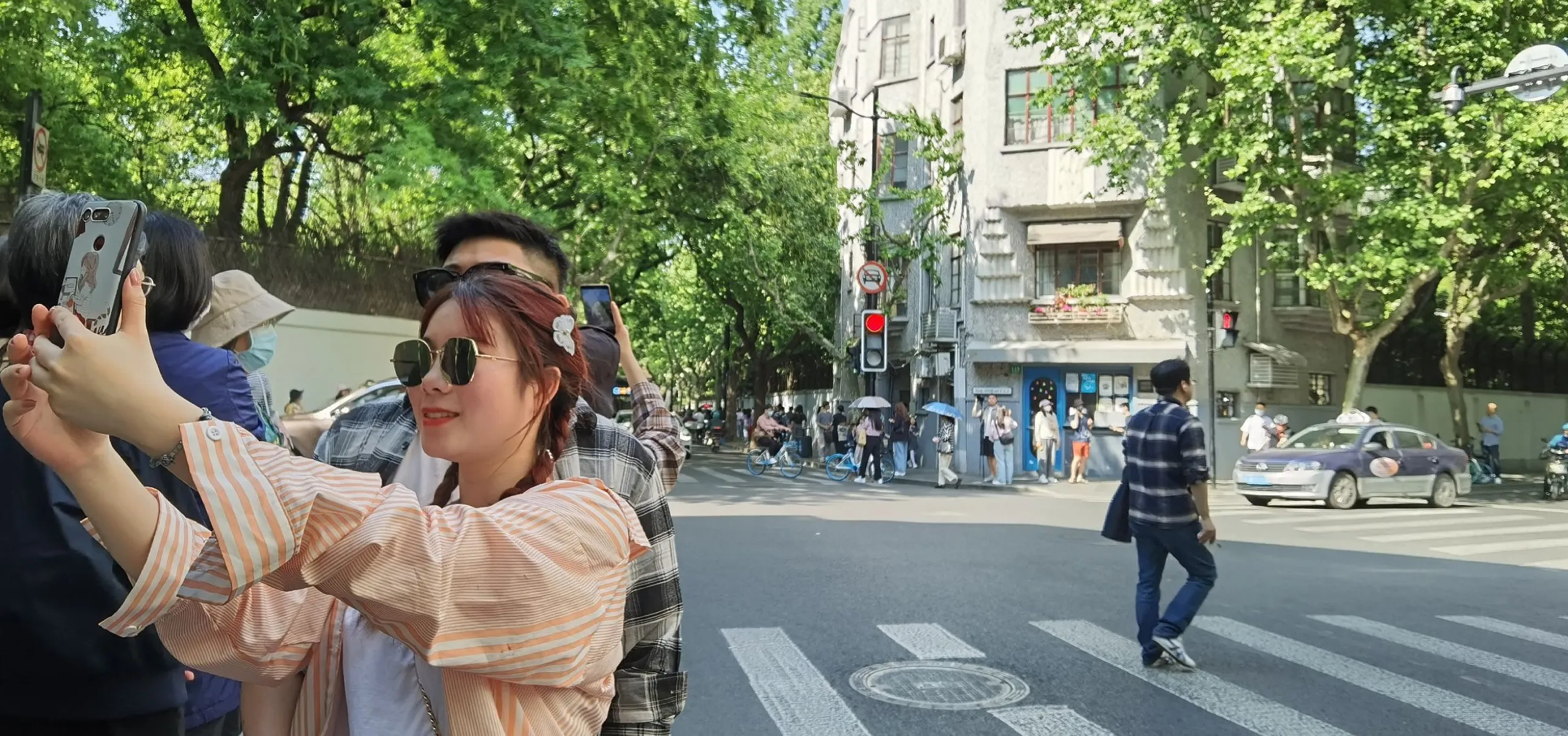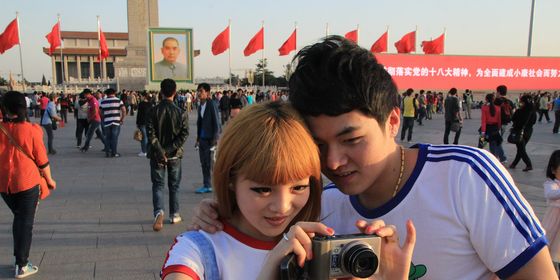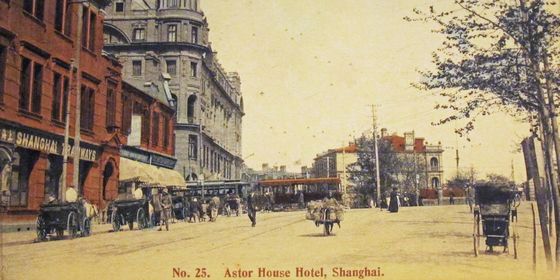Shanghai’s viral former French Concession is attracting hordes of tourists, whose presence is raising rents and anxiety for locals
For most of the last 40 years, ever since Ms. Wan moved to her apartment in a three-story 1930s terrace home on Shanghai’s Anfu Road, her daily routine has been constant: hang laundry on the rooftop, go downstairs to chat with her neighbors, and stroll over to buy the day’s fresh produce at the wet market on nearby Wulumuqi Road.
One day in early October, however, when she showed up wanting to buy her usual batch of greens, she instead found herself in a crowd of chic young people as the luxury fashion house Prada was apparently hosting a pop-up event at the market, with meat, vegetables, and flowers in branded wrapping paper. As a staff member went around asking all visitors to scan a QR code, the woman in her 60s began to worry she wasn’t going to be allowed inside.
Wan’s experiences are not unique among longtime residents of her neighborhood. In June of this year, a viral article from WeChat account The Bund depicted uninvited tourists who scale walls, tailgate residents and couriers, or even dress up as food-delivery drivers to gain access to a historic apartment building on Yongfu Road.
Similarly, a news segment on Shanghai News Radio in early November quotes a resident of Changle Road, who says she has to take sleeping pills due to the noise coming from the bar downstairs of her apartment.
Located in Shanghai’s former French Concession, Anfu, Yongfu, Wukang, and Changle Roads, as well as the nearby Wulumuqi Road, are known for European-style mansions and Art Deco shikumen (石库门), three-story terraced houses, that have become sought-after hangouts for the young, hip, and seemingly affluent.
The area has come to epitomize China’s wanghong (网红, internet celebrity) culture—becoming not only the backdrop for enviable photos for social media, but also a brewing ground for an emerging bourgeois lifestyle that champions fancy brunches, upscale coffee, and maintaining a positive Internet presence.
According to Xiaohongshu (also known as RED), the go-to app for young Chinese urbanites for travel and lifestyle inspiration, the search volume for “Anfu Road” increased 40-fold as of April 2021 compared to two years ago, and there had been a 354 percent increase compared to April in the previous year. The total number of posts on “Anfu Road” on the platform has reached over 44,000 at the time of writing, with 2,000 added just in the past week.
Businesses such as cosmetics retailer Harmay, the Italian clothing boutique Brandy Melville, and RAC coffee shop have sprung up to cater to these young visitors (Shanghai Dramatic Arts Center, another local landmark, has called the area home since 1995). Commercial rent in the area has skyrocketed—according to Chinese real estate data service platform CRIC, as of July this year, Xuhui district, where the former French Concession is located, posted the highest average year-on-year increase in rent among all the districts in Shanghai, reaching over 23 percent.
While boosting the revenue of the local economy and drumming up the commercial values of the district, the growing number of visitors has quietly altered the dynamics of the neighborhood. Longtime residents, business owners, and even wanghong themselves are questioning what makes the area attractive, and whether there’s room enough for them all.
How Fame Ripped Apart a Historic Shanghai Neighborhood is a story from our issue, “Sports for All.” To read the entire issue, become a subscriber and receive the full magazine.













